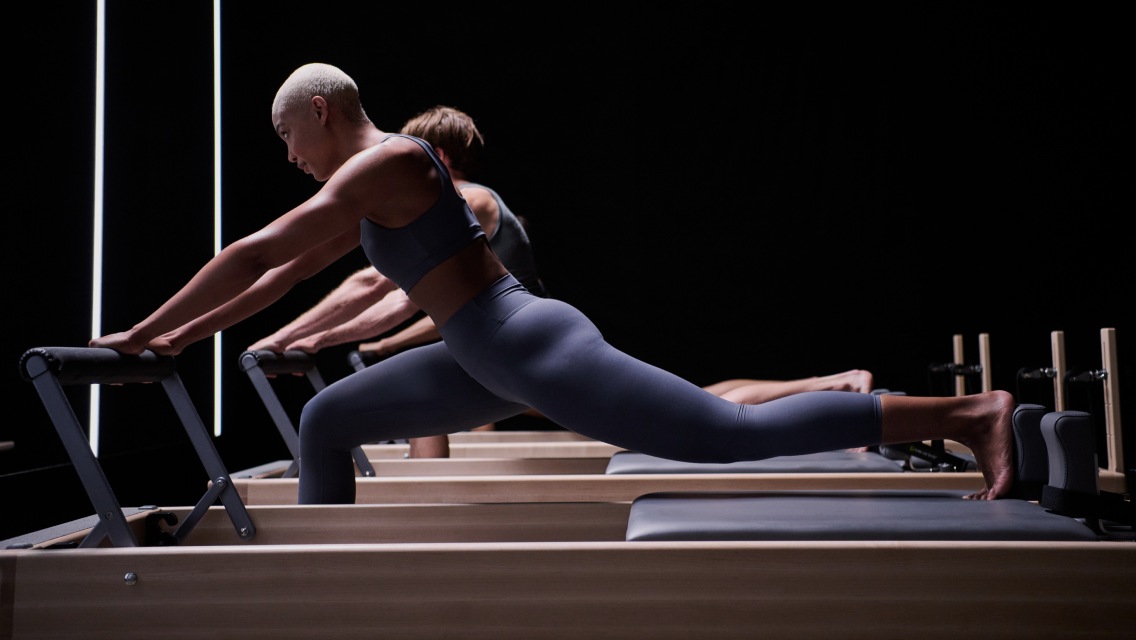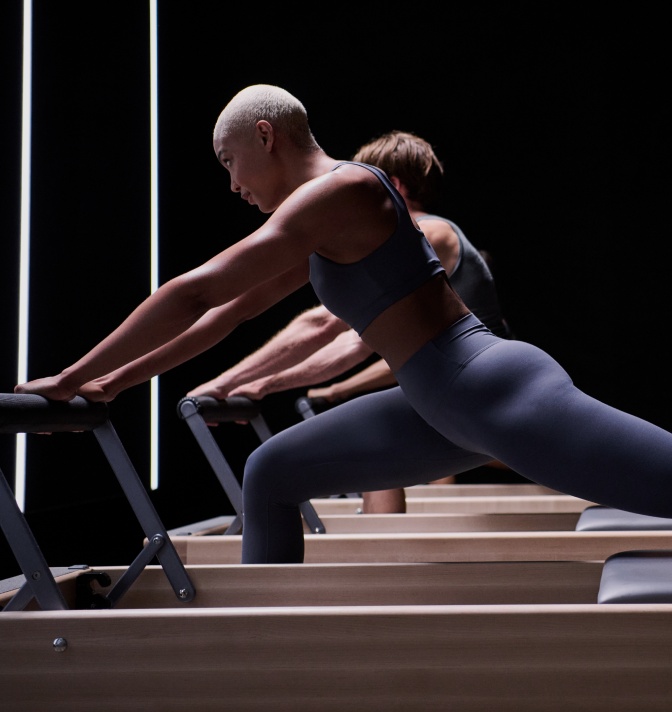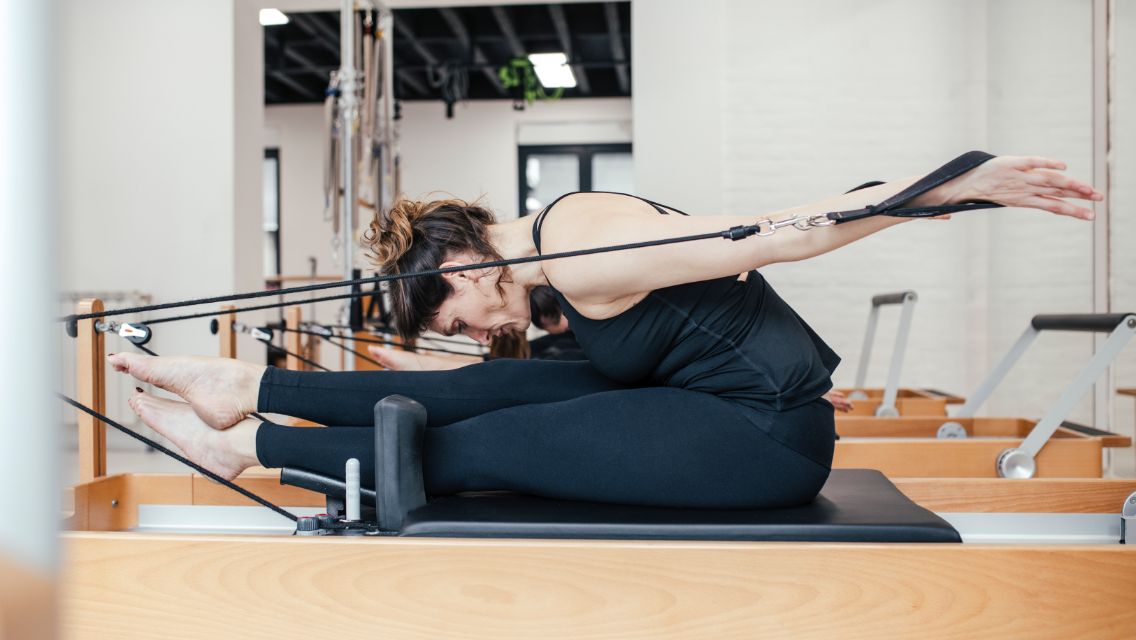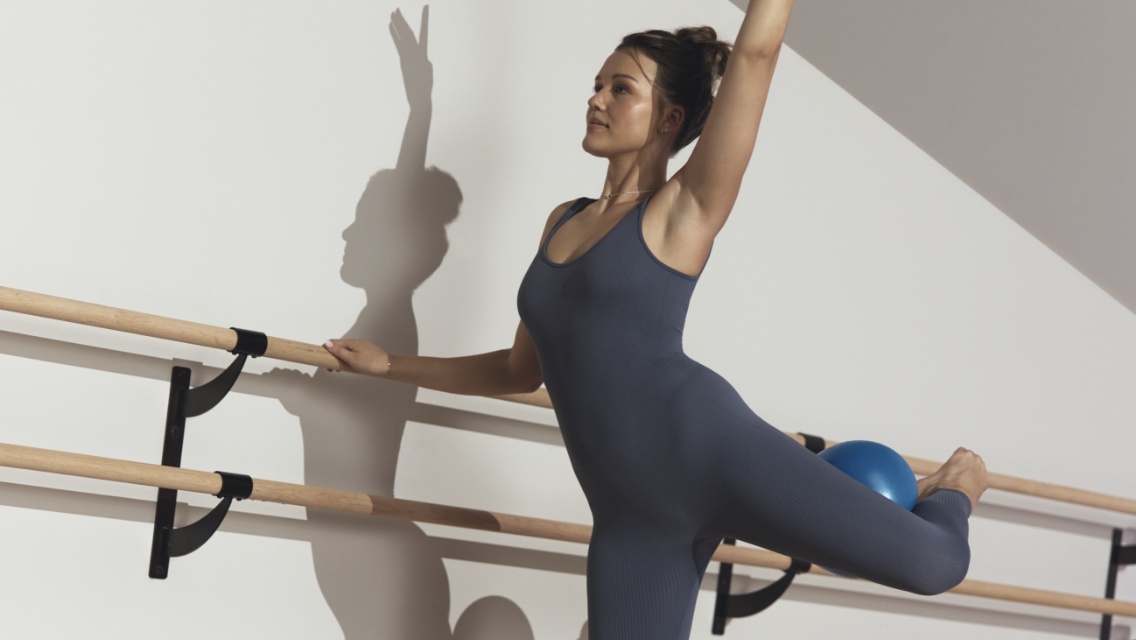Reformer-based exercise classes have surged in popularity in recent years, attracting fitness enthusiasts with their low-impact, full-body conditioning benefits. To satisfy the rising demand, Life Time is debuting CTR (Core Tone Reform), its newest signature group training format that’s designed to transform both your strength and your body.
“CTR is a high-energy, low-impact athletic reformer workout designed for all fitness levels,” says Rob Glick, senior director of programming and innovation for Life Time. “Inspired by Pilates, this class blends the power of performance-based training with the precision and control of reformer movement. It’s rhythm-driven, empowering, and graceful. And it’s included for all members with a Life Time signature membership.”
To get a sense of what this class entails, we asked Glick to answer some common questions around the programming.
Life Time | Tell us more about this new class — how was CTR designed and what is the philosophy behind the training?
Rob Glick | CTR delivers an unparalleled experience for both body and mind. Using the power of the Pilates reformer (without the tower) the exercises are designed to help cultivate strength, flexibility, mobility, and total-body control through deliberate, purposeful movement. The reformer’s structure and resistance system allows for a wide variety of strength-building exercises while also enhancing core strength, posture, and body awareness.
Each session invites participants to embrace the muscle burn. CTR starts slow, emphasizing time under tension, control, form, and deep core connection. Then, we intentionally pick up the pace when and where it makes sense to challenge a wider range of muscle fibers. We find power in the pause and strength in the tiny, subtle muscles throughout our bodies. This transformative practice not only builds a strong, balanced physique but also fosters mental resilience, kinesthetic awareness, and refined proprioceptive control — which are all skills that benefit you far beyond the studio.
LT | Can you walk us through the structure of the class? What can someone expect to experience from beginning to end?
RG | Each CTR class begins with an introduction and equipment overview to ensure you’re confident and ready to use the reformer. From there, we move into a warm-up and then a series of movements to target the whole body. This sequence of class is broken down as follows:
- Core connection and glute activation: You’ll get your body ready to move with a focused warm-up that activates targeted muscle groups and helps improve neuromuscular engagement.
- Core series: We start from the center of the body, building strength from the inside out and from the core out while continuing to maintain a deep connection to the core throughout class.
- Forward-facing series: Facing forward on the reformer, this section includes lunges, core work, and upper-body movements — all synchronized with rhythm and purpose.
- Side-facing series: Facing sideways on the reformer, this section focuses on rotation, lateral strength, the inner and outer thighs, and spinal mobility — all with a purpose of enhancing stability and coordination.
- Back-facing series: Facing backward on the reformer, this section engages the back, arms, glutes, and core to target the posterior chain for total-body balance.
- Second side-facing series: In this section, you’ll switch to face the opposite side as you did in the first side-facing series to ensure symmetry and muscle balance.
- Core crusher: This high-intensity final sequence is core-focused and challenges your endurance, providing a feeling of accomplishment.
- Stretch, release, refine: A mindful recovery experience that combines breathwork, flexibility, and mobility work to restore the body. This closing phase helps you leave class feeling grounded, lengthened, and reconnected.
LT | How does CTR differ from traditional reformer Pilates?
RG | Although CTR incorporates some Pilates elements, traditional reformer Pilates emphasizes slow, controlled movements and classical sequencing. Traditional Pilates also incorporates the tower part of the reformer, which we do not use in CTR.
CTR involves more athletic, high-energy, and music-driven movement. It’s faster-paced and designed to deliver a fitness-forward experience that connects the core and tones the body, all on the reformer and all in one powerful session.
Every class is set to a carefully curated playlist that provides a high-vibe mood. Plus, at Life Time, Pilates sessions typically happen in small-group or private settings, and CTR involves a larger group class (depending on location, your class size might range from 13 to 20).
LT | I’ve never done a reformer class — I’m curious, but I’m also nervous. Why should I try CTR, and what advice do you have?
RG | You’re not alone! Many of our participants are new to the reformer, and CTR was designed to be welcoming and empowering from your very first class. If you’re new, I recommend arriving a few minutes early so the instructor can help you get set up on the reformer and answer any questions you have.
Don’t compare yourself to others. Move at your own pace and focus on your experience. The instructor will offer modifications and options to make each exercise easier or harder, as needed. It may take a few classes to feel fully comfortable, so give yourself time and space to learn. You’ll feel stronger after one class and even more empowered with each session.
If you’re nervous about using the reformer, you might consider taking a Pilates private or group class to build additional confidence and awareness on the equipment.
LT | How often do you recommend including a CTR class in your workout routine, and is the class designed to progress as you do?
RG | I recommend taking CTR two to three times per week as part of a balanced workout routine. CTR is designed to progress with you — each class builds on prior movement patterns with purposeful sequencing, allowing you to gain strength, mobility, and control over time. You’ll notice improved body awareness, core strength, and endurance with consistent practice. The more often you come to class, the more comfortable you’ll be and the more you’ll get out of the workout.
CTR also complements other Life Time training formats and classes. While formats like Alpha focus on power and strength, CTR refines movement, enhances posture, improves joint stability, and deepens core control. It bridges the gap between intensity and refinement, creating synergy across your weekly schedule for a balanced and sustainable fitness journey.
LT | Do I need to bring anything to class?
RG | Yes, you will need grip socks to wear on the reformer to help with your safety and comfort. These are mandatory to wear. Most LifeCafes offer them for sale, but they tend to sell out quickly, so I encourage remembering to bring a pair with you. And of course, bring water to stay hydrated.
LT | I’m ready! How can I sign up for a CTR class?
RG | CTR is currently available at select Life Time clubs: Lakeshore-Irvine in California; One Wall Street, Midtown, and Penn 1 in New York City; Evanston in Illinois; and Target Center and Eden Prairie in Minnesota. You can reserve your spot for class in the Life Time app.
Note: Due to high demand, members are limited to one CTR class per day per club. If you need to cancel your reservation, please do so 12 hours prior to class. Spots that are not claimed five minutes prior to class start will be offered to waitlisted members. A no-show fee may be applied to your club tab for missed reservations without proper cancellation. Fees vary by location.
5 Moves You’ll See in CTR
Here, Glick explains how to perform a handful of common CTR moves; Kristin Osborn, five-star ELI group fitness instructor at Life Time in Irvine, Calif., shows them in action.
1. Side Splits
“This exercise focuses on lower-body strength, hip stability, core control, and balance,” says Glick. “Keep your legs straight and distribute your weight evenly as you slowly open and close them with control using the carriage on the reformer.”
2. Lateral Lunges
“This dynamic lower-body exercise targets your glutes, quads, hamstrings, and thighs while also challenging your balance, core control, and hip mobility,” Glick explains. “Facing sideways, place your standing foot on the platform and your other foot on the carriage. Slowly glide your lunging leg to the side making sure to keep your chest lifted and hips square.”
3. Rear Lunges
“This is another lunge variation to challenge your balance and stability,” says Glick. “We’re mimicking traditional reverse lunges, but on the reformer. The moving carriage adds resistance and instability to deepen muscle engagement and control. Start with your front foot on the platform and back foot on the carriage. Then, slowly bend the front knee as the back leg glides backward. Press through your front heel to return the carriage to its starting place.”
4. Side-Facing Sequence
“This is an example of a sequence of moves you might see in our side-facing series,” Glick says. “We flow through a series of movements working the core and upper body, including torso rotation, a high elbow pull, triceps extension, bicep curl, and chest fly.”
5. Flying Lunge Sequence
“This is a slightly more advanced variation of lunges that challenge your control, balance, and coordination,” Glick explains. “With one foot on the floor and one on the carriage, you’ll lower down into a lunging position and come back up into a jumping or floating motion. In this video, we show some additional options for this move, including bringing the knee into both elbows and adding a pushup in between lunges.”





